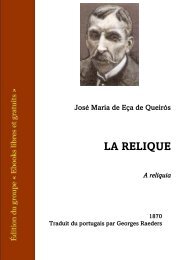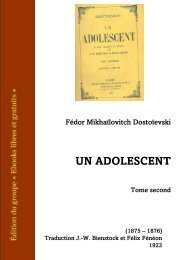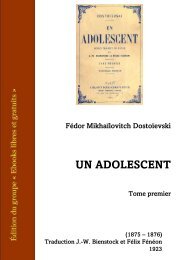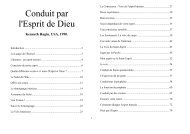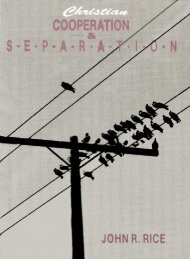The Expansion of tolerance
You also want an ePaper? Increase the reach of your titles
YUMPU automatically turns print PDFs into web optimized ePapers that Google loves.
gaining true momentum. More than 20,000 Africans, physically well-equipped<br />
to work on the Brazilian sugar plantations, thus added further variation to<br />
the already pluriform population <strong>of</strong> the colony. Moreover, in order to make<br />
the return <strong>of</strong> the moradores to the coast more attractive, after most <strong>of</strong> them<br />
had moved inland to escape Dutch-Portuguese hostilities, the Governor-<br />
General <strong>of</strong>fered freedom <strong>of</strong> worship, and implemented judicial reforms.<br />
<strong>The</strong> measures were designed to allow various ethnic groups to live alongside<br />
each other, and further strengthened Johan Maurits’s own reputation as a<br />
humanist and enlightened ruler, which had already been established by<br />
a vibrant court-life, and a position as a personal mecenas (patron) <strong>of</strong> art,<br />
architecture, and science.<br />
Historiography <strong>of</strong> the Dutch interlude in Brazil, in both Europe and South<br />
America, has tended to emphasize the importance <strong>of</strong> Johan Maurits’s<br />
seven-year tenure as Governor-General, for instance José Antônio Gonsalves<br />
de Mello’s Tempo dos Flamengos (1947). A persistent problem, however, is<br />
that many <strong>of</strong> the Brazilian scholarly publications have only appeared in<br />
Portuguese, limiting their influence on the international historical debate.<br />
Significantly, Gonsalves de Mello’s study was only translated into Dutch as<br />
recently as 2001. Other landmarks <strong>of</strong> Brazilian historiography, such as the<br />
same author’s Gente da Nação. Cristãos-novos e Judeus em Pernambuco 1542-<br />
1654 (1989), about the large Sephardic community in north-eastern Brazil,<br />
and Evaldo Cabral de Mello’s Olinda Restaurada: guerra e açúcar no Nordeste,<br />
1630-1654 (1975), dealing with the military side <strong>of</strong> the Dutch-Portuguese<br />
hostilities, have not yet been translated, neither into English nor into Dutch.<br />
A recent Dutch translation <strong>of</strong> Cabral de Mello’s O Negócio do Brasil: Portugal,<br />
os Países Baixos e o Nordeste, 1641-1669 (1998) <strong>of</strong>fers hope <strong>of</strong> greater academic<br />
interaction. Published in 2005, De Braziliaanse affaire: Portugal, de Republiek<br />
der Verenigde Nederlanden en Noord-Oost Brazilië, 1641-1669 discusses the<br />
diplomatic relations between the Portuguese and the Dutch West India<br />
Company.<br />
<strong>The</strong> single book that has succeeded in bridging the linguistic gap,<br />
Charles R. Boxer’s classic study <strong>The</strong> Dutch in Brazil, 1624-1654, first<br />
published in 1957, therefore remains a pivotal work, comprehensively<br />
describing and analyzing the political developments in the colony. In the<br />
Netherlands meanwhile, the rise <strong>of</strong> cultural history as a subdiscipline has<br />
seen an increase in awareness <strong>of</strong> the artistic and scientific achievements <strong>of</strong><br />
9






